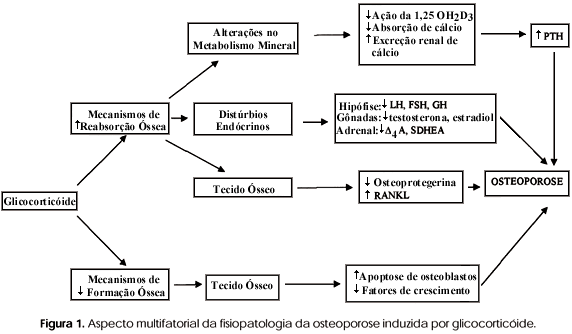Chronic hypercortisolism is the most frequent cause of secondary osteoporosis involving mainly trabecular bone. Approximately 30-35% of the patients with Cushing's syndrome present with compression fractures of vertebrae, and the risk of femoral neck fracture is increased in 50% in that population. Several mechanisms have been proposed to explain the association between hypercortisolism and osteoporosis, as the direct action of glucocorticoids in parathyroid glands and bone cells, alterations in the production of prostaglandins, citokines, interleukines, growth hormone (GH), insulin like growth factor I (IGF-I) and gonadal steroids. Contradictory results have been presented in relation to PTH secretion, where normal and high levels have been described. Elevated PTH secretion can occur as a consequence of disturbances in mineral metabolism, i.e. decrease in the intestinal absortion and elevation in the renal excretion of calcium, decrease in the number of parathyroid receptors for 1,25(OH)2D3, abnormalities in the calcium set point for PTH secretion, and alteration in PTH activity. In this review, several pathophysiologic aspects and possible mechanisms involved in the association between osteoporosis and hypercortisolism are discussed.
Osteoporosis; Hypercortisolism; Cushing's syndrome; Parathyroid hormone; Calcitonin; Calcium; Magnesium


